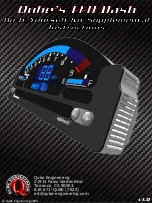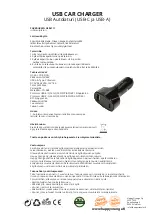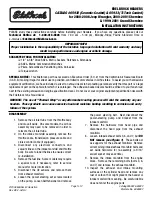
Maintenance
Tyre Check
DEFECTIVE
TYRES
ARE
DANGEROUS!
DO NOT drive if any tyre is damaged, is
excessively worn, or is inflated to an incorrect
pressure.
Always drive with consideration for the condition of the
tyres, and regularly inspect the tread and side walls for any
sign of distortion (bulges), cuts or wear.
Note: Avoid tyre contact with oils, grease and fuel.
Tyre Pressures
Before a long distance journey, the tyre
pressure must be checked.
Check the pressures at least every month, when the tyres
are cold.
If it is necessary to check the tyres when they are warm,
you should expect the pressures to have increased by 0.03
to 0.04 MPa. In this circumstance, NEVER let air out of
the tyres in order to match the recommended pressures
(cold).
Valves
Keep the valve caps screwed down firmly - they prevent dirt
from entering the valve. Check the valve for leaks (listen
for a tell-tale hissing) when you check the tyre pressure.
Punctured Tyres
Your vehicle is fitted with tyres which may not leak if
penetrated by a sharp object, provided the object remains
in the tyre. If you are aware of this occurring, reduce speed
immediately and drive with caution until the spare wheel
can be fitted, or repairs undertaken.
Note: If the wall of the tyre is damaged or distorted,
replace the tyre immediately, do not attempt a repair.
Tyre Wear Indicators
The tyres fitted as original equipment have 1.6mm-high
wear indicators at their tread pattern bottom, vertical with
the wheel rolling direction and evenly distributed around
the circumference. The mark on the tyre side such as
capital letters TWI or triangular symbol shows the location
of wear indicator.
284
Summary of Contents for MG HS
Page 88: ......
Page 166: ...Seats Restraints normally for those about 7 years old or those older than 7 years old 152...
Page 269: ...Emergency Information Code Specs Function F53 F54 255 5...
Page 272: ......
















































